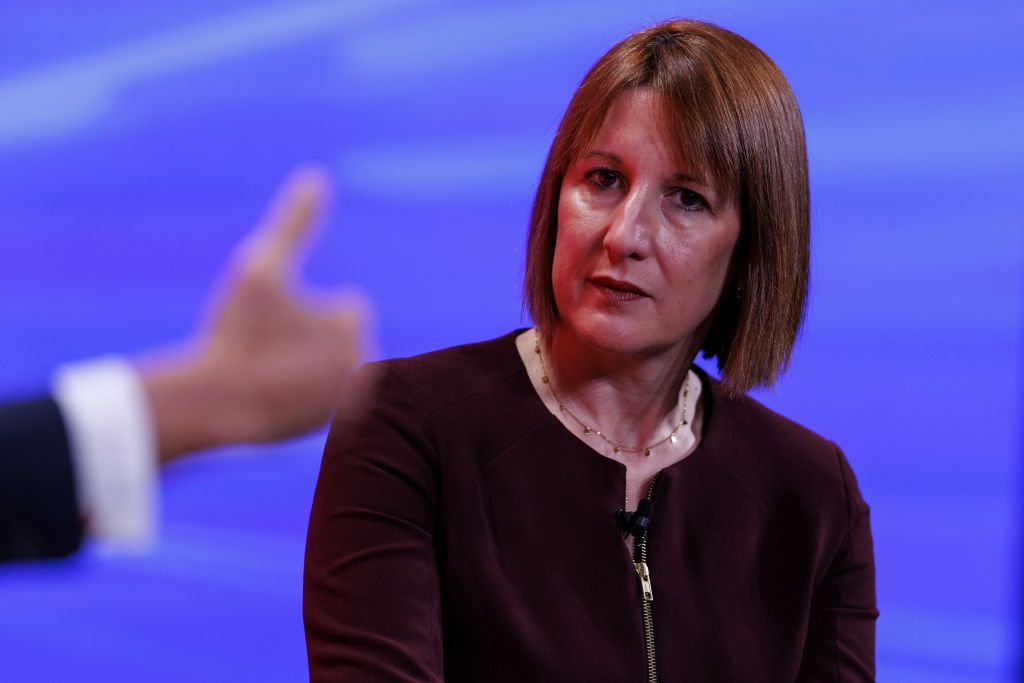The much-anticipated Autumn Budget will take place on 30 October – a week today. Chancellor Rachel Reeves has now struck funding agreements with all government departments, and is likely turning her attention to the matter of her speech.
Prime minister Keir Starmer has previously warned that the Budget will be “painful” and involve “tough decisions”, leading to speculation about tax hikes.
Over the summer, Reeves accused the former Conservative government of leaving a £22 billion shortfall in the public finances. In recent days, talk has turned to a £40 billion “funding gap” – the sum Reeves is reportedly looking to raise through a combination of spending cuts and tax rises.
Subscribe to MoneyWeek
Subscribe to MoneyWeek today and get your first six magazine issues absolutely FREE
Get 6 issues free
Sign up to Money Morning
Don’t miss the latest investment and personal finances news, market analysis, plus money-saving tips with our free twice-daily newsletter
Don’t miss the latest investment and personal finances news, market analysis, plus money-saving tips with our free twice-daily newsletter
Labour has previously promised not to raise income tax, employee National Insurance contributions or VAT. But there are a range of other areas that could be targeted, such as pensions, inheritance tax (IHT) and capital gains tax (CGT).
Furthermore, while income tax rates are not expected to rise, taxpayers will find themselves paying a larger annual bill regardless thanks to the silent tax collector that is fiscal drag.
The personal allowance and income tax thresholds have been frozen until 2028, meaning taxpayers are increasingly finding themselves being dragged into a higher band of tax as their salary increases with inflation.
If the latest rumours are true, Reeves could be looking to extend this freeze (imposed by the previous Conservative government) until the end of the current parliament.
Against this backdrop, and with seven days to go until the Budget, we share seven tax-saving tips.
1. Top up your ISA
Each year, adults are entitled to stash up to £20,000 in an individual savings account (ISA). This is a tax-efficient wrapper, meaning any income or capital gains you earn in the account is exempt from income and capital gains tax.
You can invest your allowance in either a cash or stocks and shares account.
It is rarely a bad idea to top up your ISA, but with capital gains tax a potential target in the Budget, it could be particularly important to shield more of your assets from the taxman.
The capital gains allowance has already been slashed in recent years from £12,300 in 2022/23, to £6,000 in 2023/24, to £3,000 in 2024/25. Now, Reeves is rumoured to be weighing up the pros and cons of hiking CGT rates.
“If you have investments outside a tax wrapper the savviest move is to transfer that money into an ISA, or into a pension if you can afford to tuck it away for longer,” says Charlene Young, pensions and savings expert at AJ Bell.
2. Consider a ‘Bed and ISA’ transfer
A ‘Bed and ISA’ transaction involves transferring existing assets into an ISA wrapper, where any future capital growth or income will be sheltered from the taxman.
This type of transaction has become increasingly common in recent years, as investors look for ways to protect their dividends and cut their capital gains tax bill as allowances are slashed. The Budget has only added to this trend.
Investment platform Interactive Investor recently reported that it has been its busiest summer ever for ‘Bed and ISA’ transfers, with activity up 27% between 1 June and 31 August compared to the same period a year ago. Transactions are up 99% compared to the summer of 2022.
By carefully using your annual CGT allowance and realising any gains over time, you can try to gradually migrate your assets into an ISA in the most tax-efficient way possible. There may be some fees and charges associated with selling and then rebuying the investments, but these should be mitigated by the long-term tax savings in most cases.
3. Make use of gifting allowances
Inheritance tax has also been mooted as a potential area of focus in the upcoming Budget.
Reeves is not expected to hike the rate at which IHT is charged – it is already high at 40%. However, recent reports suggest she could tighten up current IHT exemptions. Areas of focus could include pension pots, agricultural relief and AIM shares. We share further details in: “Inheritance tax: will you pay more after the Autumn Budget?”
Many families have already found themselves being dragged into the inheritance tax net in recent years. This is largely a result of fiscal drag, driven by rising asset values and frozen nil-rate bands.
Inheritance tax receipts hit a record £7.5 billion in the last tax year (2023/24), and the latest data suggests we are on track for another all-time high this year (2024/25).
Rules are in place to prevent families giving away all of their wealth before they die in an attempt to dodge inheritance tax. However, under current rules, you are generally permitted to give away gifts worth up to £3,000 a year.
You can continue to make gifts once you have exceeded this allowance, but if you die within seven years, an inheritance tax bill could be due.
“Questions around the future of inheritance tax could encourage people to consider giving gifts during their lifetime,” says Sarah Coles, head of personal finance at Hargreaves Lansdown. She adds that “sensible gifts can help support younger family members at a time when you’re still around to see your family enjoy the money”.
Coles also points out a separate rule which allows you to give away surplus income without paying any inheritance tax. “You need to pay it from your regular monthly income and have to be able to afford the payments after meeting your usual living costs,” she explains.
4. Get the clock ticking on a ‘potentially-exempt transfer’
If Reeves decides to tighten up inheritance tax rules, ‘potentially-exempt transfers’ are another area she could go after. This refers to transfers that exceed the gifting allowances, but which will be free from an IHT bill if the gift-giver lives for long enough.
As mentioned previously, the current rule requires you to outlive the gift by seven years. However, sources briefed on Reeves’s Budget preparations told the Financial Times she has looked at extending this to 10 years.
With this in mind, those considering generous gifts may want to get the clock ticking on a ‘potentially-exempt transfer’ sooner rather than later.
5. Top up your pension
Topping up your pension is often a good idea if you have a little cash to spare. Retirement costs have soared in recent years, meaning many savers are at risk of running out of money in old age.
According to the latest figures from the Pension and Lifetime Savings Association, a comfortable retirement costs the average two-person household £59,000 per year. For a single person, it is estimated to cost £43,100.
A pension is one of the most tax-efficient ways to save for the future, as you benefit from tax relief on any contributions (up to an annual limit of £60,000). If you decide to up your contributions voluntarily, it is possible that your employer will match this up to a certain level.
Furthermore, any income or capital gains earned within the pension wrapper are tax-free, meaning your pension could be another excellent way to mitigate any CGT hikes in the Budget.
6. Don’t let panic drive an irreversible pension decision
Pensions have been a big talking point in the lead-up to Reeves’s Budget, with a particular focus on tax-free cash.
Under current rules, those with a private pension are allowed to draw 25% of their pension pot tax-free (up to a certain limit). After this point, they start paying income tax on any withdrawals at their marginal rate.
The tax-free cash is currently capped at £268,275, known as the lump sum allowance (LSA).
Recent speculation has focused on whether Reeves will change the rules so that savers start paying tax earlier. There are a couple of different ways she could do this, from reducing the percentage figure (say to 20%) to cutting the lump sum allowance (say to £100,000).
As a result, some savers have been rushing to withdraw their tax-free cash now in advance of the Budget. However, this isn’t always a good move.
Myron Jobson, senior personal finance analyst at Interactive Investor, says: “If you are going to take a tax-free lump sum from your pension, make sure you have plans for your money – withdrawing cash you don’t need can come with several potential pitfalls.
“These include paying more income tax and capital gains tax than necessary, increasing your inheritance tax bill, and harming how quickly your money grows in the future.”
Jobson adds that many people take the tax-free lump sum and simply stick it in a savings account. But it is worth pointing out that any savings held outside of an ISA will generate a tax bill once the interest earned crosses the £1,000 threshold. For higher and additional-rate taxpayers, the threshold is even lower at £500 and £0 respectively.
Money that sits idle in a savings account is also vulnerable to the corrosive effects of inflation. Meanwhile, invested in your pension, it has the potential to grow further over time.
7. Think about the best time to realise capital gains
Given that CGT is a potential target in the Budget, it is worth thinking about the best time to realise gains if you are considering selling some of your assets. The current CGT allowance is £3,000, but this renews each year at the start of the tax year.
Using your allowances wisely will become even more important if the rate of CGT goes up.
For example, if you wanted to sell £6,000 worth of shares, it could make sense to sell half of your holding on 5 April (final day of the current tax year) and half of your holding on 6 April (first day of the new tax year). That way, you could make use of each annual allowance and no CGT would be owed at all.
If your income fluctuates widely from year to year, you should also take this into consideration, as it could mean you are in a lower tax band some years. Higher and additional-rate taxpayers generally pay a higher rate of CGT than basic-rate taxpayers.
There are some other top tips you can follow to reduce your CGT liability, including offsetting any losses, deducting unused losses from previous tax years, and transferring ownership of assets to your spouse or civil partner. We take a closer look in a recent piece: “10 ways to cut your capital gains tax bill”.





